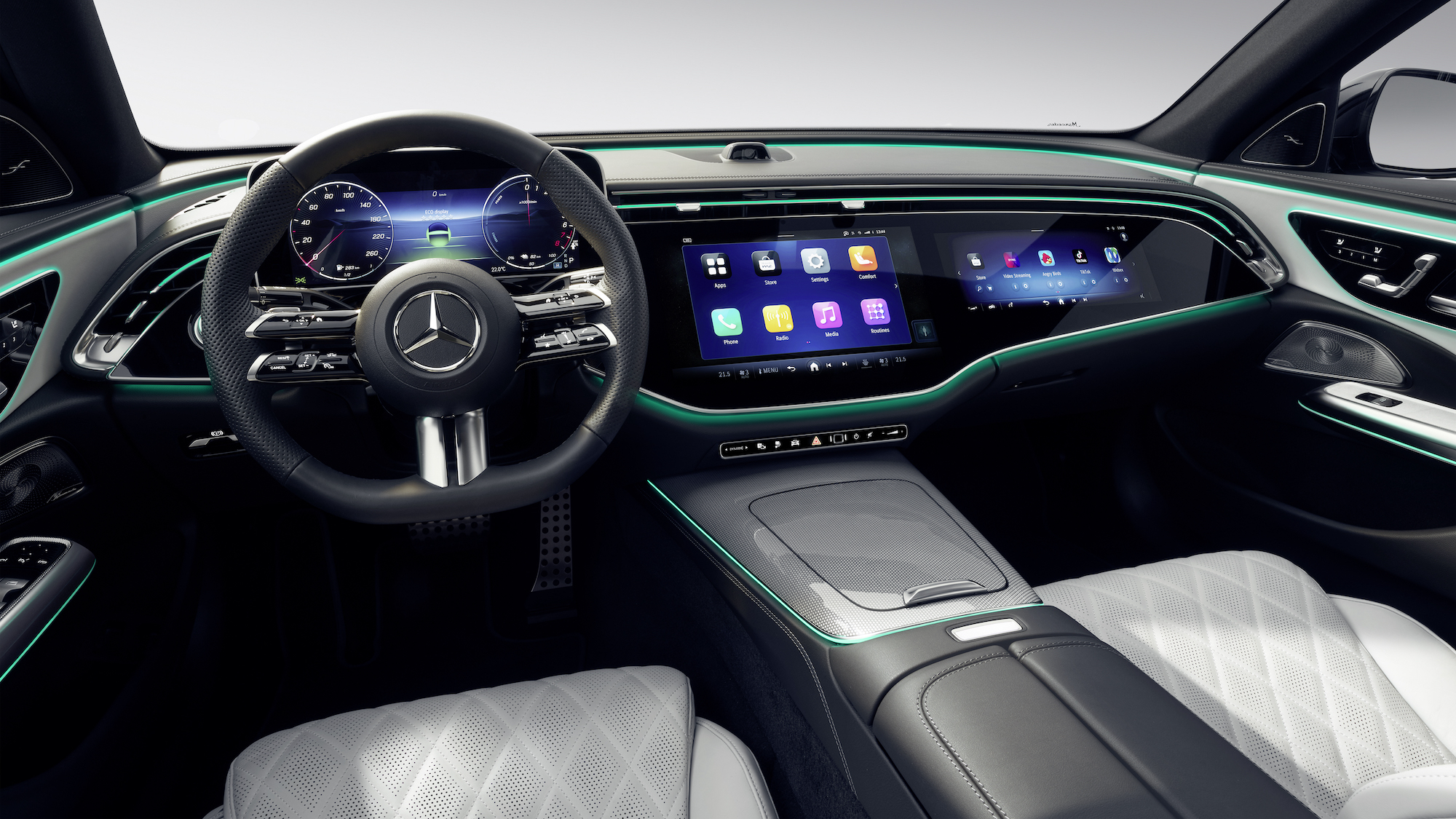TikTok, the social media app, is everywhere it seems. It’s even making its way into vehicles, starting with the new Mercedes-Benz E-Class that’s coming to market in fall 2023.
The Mercedes-Benz E-Class will come with an updated version of the MBUX infotainment system — a precursor to the automaker’s custom-built operating system called MB.OS. Mercedes plans to launch MB.OS in its next generation of vehicles expected to come to market in late 2024.
TikTok isn’t the only app coming to the Mercedes E-Class. But it is one of the more interesting choices because it illustrates Mercedes’ interest and presence in the Chinese market. TikTok will also be available in the new Mercedes E-Class in other markets, including the United States.
“It is highly, highly relevant,” Mercedes-Benz CEO Ola Källenius said about TikTok in Asia. “Let’s not forget that the average age of an S-Class owner in China is around or below 40 years old.”
“When we choose all these different apps, we go market by market or region by region,” he added. “We look at what is the most used — music or film [and] so on — and we tried to go down that list.”
The newly updated MBUX system, which will feature a “superscreen” that spans the entire dashboard, will allow drivers to click on the TikTok app and watch videos when the vehicle is parked. Passengers will also be able to get into the action because they will have access to a portion of the screen located directly in front of them. The passenger screen has a limited field of view, which means the driver won’t be able to watch TikTok videos being played on that screen. A driver monitoring system will also track where the driver is looking.
Mercedes is also making Zoom video conferencing, Angry Birds, Vivaldi web browser and Webex by Cisco apps available in the E-Class infotainment system. And more will likely make its way into the vehicle via over-the-air software updates.
Mercedes created a new software architecture to make it easier to integrate third-party apps into the infotainment system. It also has a new app store, which is accessed through the Mercedes me app.
The interior of upcoming E-Class was just one of the announcements and debuts made Wednesday at the automaker’s research and development center in Sunnyvale, California. Mercedes and Google announced a long-term partnership designed to give the German automaker control over its IP and marketplace while offering drivers navigation, maps and YouTube provided by the tech giant.
Mercedes also revealed the details behind its own operating system, called MB.OS (which is expected to debut in its next generation of vehicles in the middle of the decade), and an expanded partnership with lidar company Luminar.
TikTok is coming to cars, starting with Mercedes-Benz by Kirsten Korosec originally published on TechCrunch
source https://techcrunch.com/2023/02/22/tiktok-is-coming-to-cars-starting-with-mercedes-benz/

Comments
Post a Comment